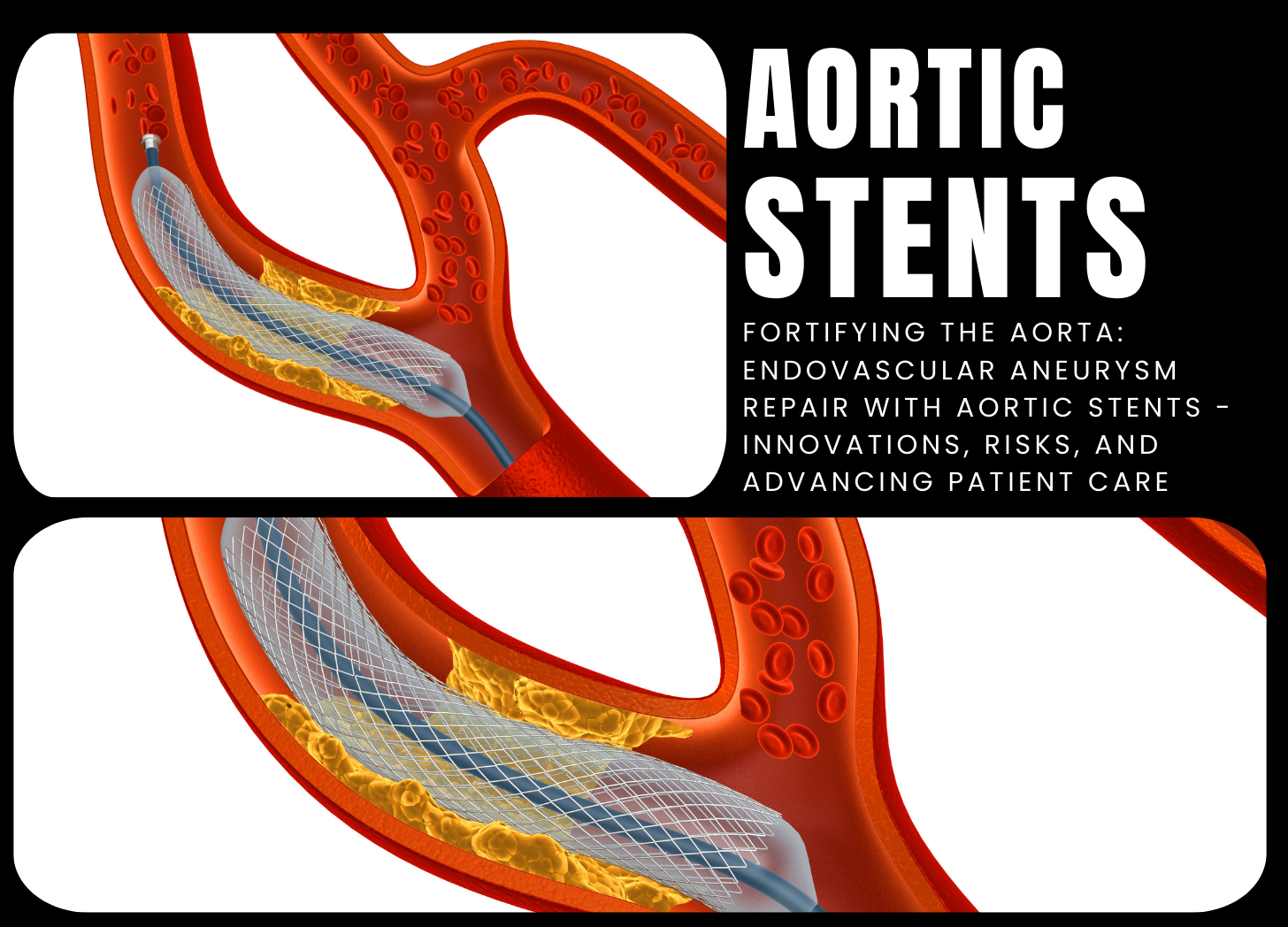Contact Us
Contact Us

Aortic stents, also known as aortic stent grafts or endovascular stent grafts, are medical devices designed to treat aortic aneurysms and other aortic issues. An aortic aneurysm occurs when a weakened section of the aorta—the body’s main artery—bulges outward, increasing the risk of rupture, internal bleeding, and other severe complications. Aortic stents aim to reinforce and support the weakened area of the aorta, reducing the risk of rupture and restoring normal blood flow.
Procedure:
The placement of an aortic stent is performed through a minimally invasive procedure known as endovascular aneurysm repair (EVAR). This procedure is usually conducted under local or general anesthesia in a specialized operating room or catheterization lab. During EVAR, a thin, flexible tube called a catheter is inserted into a blood vessel in the groin or arm and navigated to the aneurysm site using imaging techniques such as fluoroscopy or ultrasound. Once the catheter reaches the aneurysm, the aortic stent graft is deployed and positioned within the aneurysm, creating a new pathway for blood flow and sealing off the weakened section of the aorta.
Stent Design:
Aortic stents are typically composed of a metal mesh or fabric material that conforms to the aorta’s shape while providing structural support. The stent graft consists of two main components: a metal framework or scaffold (the stent) and a synthetic fabric covering (the graft) that lines the interior of the stent. This design allows the stent graft to exclude the aneurysm from circulation while redirecting blood flow through the stent, which helps prevent further aneurysm enlargement and reduces the risk of rupture.
Suitability and Risks:
Although endovascular aneurysm repair with aortic stents is less invasive compared to traditional open surgery and generally leads to shorter recovery times and fewer complications, it may not be suitable for all patients or types of aortic aneurysms. Factors such as the size, location, and shape of the aneurysm, along with the patient’s overall health and medical history, will determine if endovascular repair is the most appropriate treatment option. In some cases, complex or high-risk aneurysms may require open surgical repair (aneurysmectomy) or hybrid procedures combining both endovascular and open techniques.
Potential Complications:
Endovascular aneurysm repair with aortic stents is generally considered safe and effective, but potential risks and complications include bleeding, infection, blood clots, stent migration or misplacement, endoleaks (persistent blood flow outside the stent graft), stent graft collapse or rupture, and damage to surrounding blood vessels or organs. Ongoing monitoring and follow-up care are crucial to detect and manage any issues that may arise after the procedure.
Conclusion:
Aortic stents play a vital role in treating aortic aneurysms, providing a less invasive alternative to traditional open surgery for suitable patients. By reinforcing and stabilizing the weakened area of the aorta, aortic stents help reduce the risk of rupture and improve long-term outcomes. Proper patient selection, meticulous procedural technique, and diligent post-procedure monitoring are essential to ensure the safety and success of endovascular aneurysm repair with aortic stents.
References:
Post a Comment